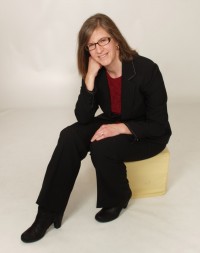Doctors talk with their patients about many things that might make some people uncomfortable – sexual issues, abuse (physical or emotional), anxiety, depression, sleep habits, bowel habits, and fears about health-related topics – things that many people might not talk about in casual conversation at the coffee shop or at work. Doctors talk with their patients about smoking, weight, eating habits, exercise, seat belt use, helmet use, and a myriad of other health and safety issues. Talking about really personal stuff is what doctors do – we’re privy to some of the most intimate details of people’s lives. We have to be. We can’t do our jobs right without thorough and open communication with our patients.
But Florida recently passed a law (which a federal appeals court ruled constitutional) that will punish doctors who ask about firearms unless that discussion is “relevant to the patient’s medical care or safety, or the safety of others.” Well, a pretty big point of discussing firearms with patients is that unlocked, loaded firearms can be exceedingly relevant to the safety of the patient and others. This is a bizarre incursion of the legislature into a doctor’s office. And I don’t like legislators in doctors’ offices. The only people who belong in a doctor’s office are the doctor, the patient, and other people whom the patient expressly invites.
As Dr. Francis W. Peabody of Harvard Medical Service famously said in his speech to medical students in 1925, “One of the essential qualities of the clinician is interest in humanity, for the secret of the care of the patient is in caring for the patient.” A good doctor cares about her patient. She asks questions so that she can understand her patients and best provide information that will benefit them. And our words frequently make a difference in people’s lives. Our thoughts, explanations, time, and support make a difference. Patients are more likely to address smoking and weight issues when these issues are broached by their doctors and specific risks are explained to them. I would extrapolate that parents would be more likely to keep firearms locked away out of children’s reach if their children’s pediatricians discussed firearm safety with them the same way pediatricians discuss car seat safety.
The arguments of the people who pushed for and are in favor of this particular piece of legislation state it as an invasion-of-privacy concern. Extrapolating from the comments sections of the online articles pertaining to this issue, there is a not-insignificant number of folks with the perception that doctors are the puppets of the government, gathering information and putting it into a big governmental database. Basically, people don’t trust that they have any privacy in their doctors’ offices.
There have been other “gag order” laws restricting what doctors are allowed to discuss with their patients (e.g. women’s health issues), but these have historically been put in place to prevent physicians from providing certain medical information to patients. The recent Florida legislation was put in place to prevent physicians from receiving certain information from patients. This particular legislative control of informational flow thus differs from others in its directionality. Traditionally, the intrusion into the doctor’s office has been due to the proponents of the laws not trusting patients (read: “not trusting women”) with information, but the current law in question indicates that its proponents don’t trust the doctors.
Pretty much any doctor-patient interaction could be construed as an invasion of privacy. Clothes are off. Orifices are inspected. Intimate subjects are discussed. And in the past there has been an understanding that all of that stays in the exam room. It’s not anyone else’s business.
But now there’s a computer in that room. And it’s pretty much a government mandated computer.
The computer certainly has some benefits for patients – it can help with remote access to records and it can catch potential drug interactions. It can help remind doctors when someone is due for a mammogram or colonoscopy. Of course it is only as good as the data entered, but when that is done with care and diligence, it can definitely be clinically helpful. And the data can be mined, hopefully in ways that provide useful clinical insights. Of course the main impetus behind that computer, and the reason it was mandated, is Medicare/Medicaid billing and payment decisions.
That computer, despite its clinical benefits, has costs. It draws a doctor’s focus and attention away from a patient and onto a screen. When was the last time your doctor spent more than 10 seconds in a row making eye contact with you? Doctors end up staring at the computer screen, reading down a list of questions and clicking boxes with the answers. So there is the sense that someone else is in the room. And there is a subsequent loss of trust.
As many thousands of pages there may be in the HIPAA laws (which are there to protect electronic patient information), I haven’t met anyone who trusts a computer more than (or even as much as) they trust a person. And most doctors I’ve spoken with don’t completely trust their electronic medical record systems or the infallibility of mandated practice protocols. Maybe the general public isn’t trusting us because we’re not completely trusting ourselves.
